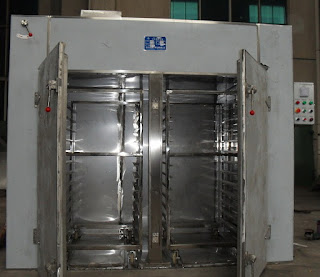Jual Culture Aspergillus oryzae
Aspergillus oryzae, along with most other members of the Aspergillus family, has a hyphae that is hyaline and septate, and conidiophore, which ends at a round-shaped vesicle. From the vesicle extend long filaments called a conodial chain, which appear as long fluffy strands on the surface of the substrate. The spore-bearing cells, or asci, are produced within the ascocarp, or the fruiting body. The primary enzyme secreted by the filamentous fungi is called amylase, which lends a sweet taste to the food it is fermented into. This enzyme is most efficient at a temperature of 35-40 degrees Celsius. Most other enzymes found in A. oryzae grow at a temperature of around 30-35 degrees Celsius.
Members of the Aspergillus genus are distinct from other microbes due to the fact that they utilize both a primary and secondary metabolic system. The functionality of the Aspergillus metabolism depends on its carboxylic acids, which break down into fatty acid chains that are composed of a unique set of fatty acid synthase complexes. These chains aid in the development of the Aspergillus cell membrane and the enzyme storage vesicles. The primary metabolism of A. oryzae receives its energy through contact with energy sources (e.g. grains or starches). Once it makes contact with an energy source, it secretes enzymes that degrade the proteins and peptide bonds within the starch and convert them into amino acids and sugars for consumption. The secondary metabolism utilizes acidic compounds to suppress metabolic pathways, which allows A. oryzae to produce secondary metabolites. These metabolites grant A. oryzae the ability to modify themselves according to their current environment--they are able to increase or decrease their fitness to allow optimum metabolic efficiency. This ensures that fungi within the Aspergillus genus are able to adapt to a wide range of environments. Most of what is currently known about secondary metabolites is comprised of the polyketide molecules generated from the acidic compounds within the secondary metabolism.
It was previously thought that A. oryzae could only reproduce asexually through mitosis by dispersing spores using conidiophores. Yet, it was recently found to contain an alpha mating-type gene within its genome which implicates a heterosexual mating process. Despite this, asexual reproduction is favored in all conditions, and rarely will sexual reproduction be utilized. A. oryzae grows under warm temperatures and moist environments, as most fungi and mold do. As it matures, the filaments grow longer into a white, fluffy texture.
Aspergillus oryzae tend to prefer environments that are rich in oxygen, as they are molds that inhabit the surface of various substrates that provide beneficial nutrients to them. They also prefer environments between 30 and 40 degrees Celsius that have adequate moisture for the spores to cultivate and propagate. A. oryzae are a domesticated species and are most commonly found in northern regions, specifically in East Asia, but can be found anywhere. The Aspergillus genus is extremely common, although A.oryzae specifically is more rare due to its domestication for use in fermentation in the food industry.
A. oryzae is considered to be a pathogenic microbe because of the fungi's contamination of carbon-rich and starchy foods such as beans, rice, or bread as well as various trees and plants. Also, the Aspergillus genus is characterized by its mycotoxins, primarily kojic acid, produced by the secondary metabolism of A. oryzae and close relatives. A. oryzae can also produce toxins such as maltoryzine, cyclopiazonic acid, and b-nitropropionic acid due to its close relationship to A. flavus. Despite this, A. oryzae has been determined to be relatively safe for use in food processing because of its domestication and evolution from wild-type relatives A. flavus and A.niger, which led to an inactivation the proteins that code for its toxin pathway. The production of kojic acid in members of the Aspergillus genus was found to be strain-specific and and environmentally-based. For A. oryzae specifically, the release of the mycotoxin kojic acid could be triggered by an environment of extended fermentation, but as long as adequate precautions are taken in industrial processes, the fungi is safe.[9] Other than this, the greatest risk from A. oryzae is airborne spores that could be inhaled in large amounts by industrial workers.
As A. oryzae is a fungus native to humid East Asian regions, it is a microorganism that is primarily used in Japanese and Chinese food production. A. oryzae is utilized in solid-substrate cultivation (or SSF) which is a fermentation process used to make various different kinds of foods, from soy sauce to sake and vinegar due to its ability to secrete a multitude of useful enzymes. A. oryzae is said to have the greatest potential in efficient production of enzymes of those within the Aspergillus genus, and is therefore taken advantage of in the fields of genetic engineering and biotechnology to create industrial enzymes for even more profitable manufacturing. In solid-substrate cultivation, A. oryzae is sprinkled over rice, barley, or soybeans and fermented at a specific temperature ideal for fungus growth. The A. oryzae is sprinkled on the grain at a temperature under 45 degrees Celsius, and the fungus (called tane koji or "seed koji" by the Japanese) grows on the steamed rice, which then raises in temperature and moisture level to allow the fungus to propagate. The enzymes it secretes break down the starches and proteins within the grains and convert it into amino acids and sugars. A grain with properly-grown fungi mycelium is characterized by fluffy, white filaments covering the outside. The production of koji, the product of the filamentous fungus A. oryzae and the chosen grain, and the techniques to cultivate it are kept a secret by each koji company.




Komentar
Posting Komentar